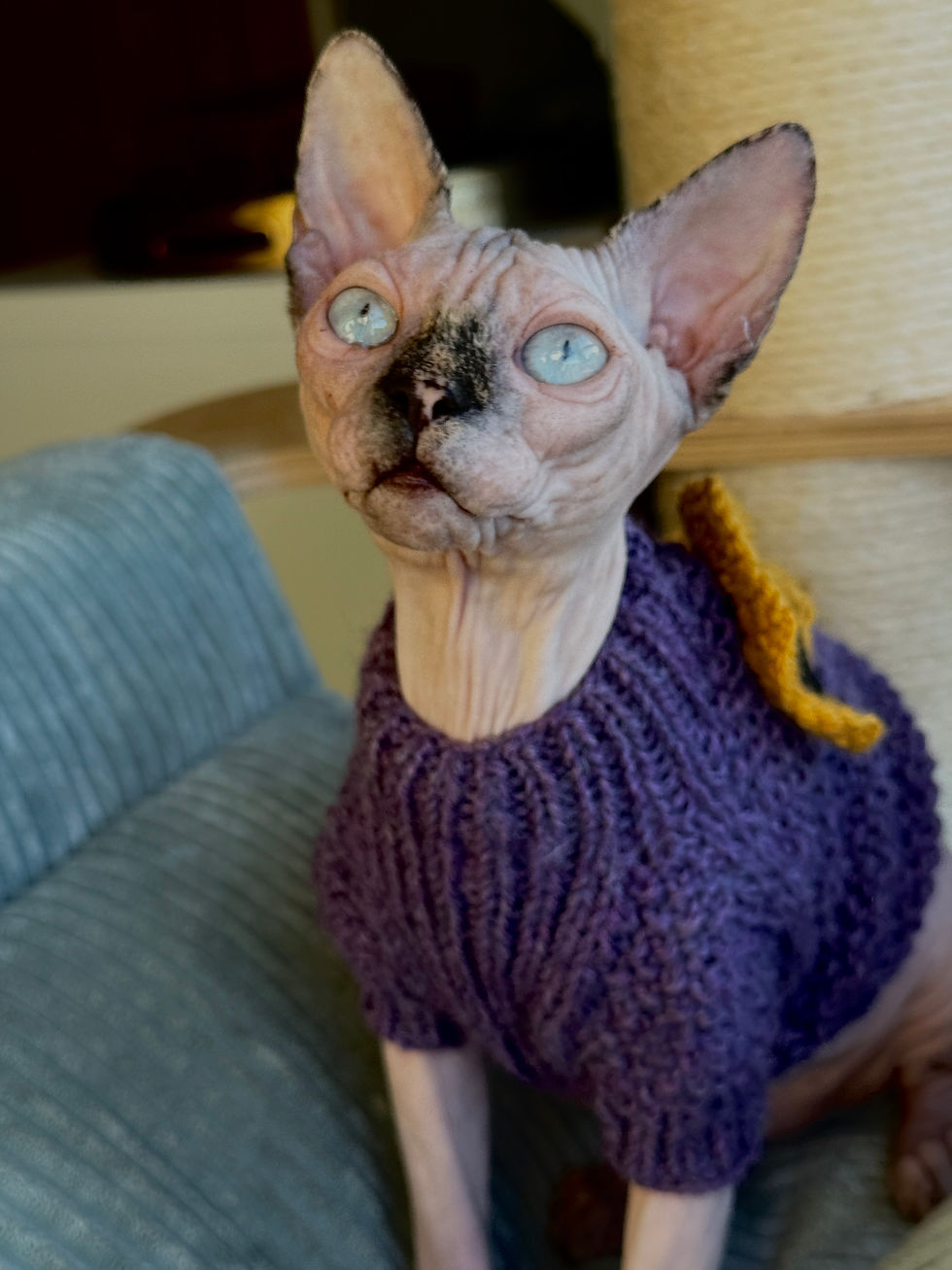GENES DON’T LIE : Dominant or Recessive Genes? It Makes All the Difference.
- Iconicsx
- Oct 20
- 2 min read
Every cat is a walking story. But that story doesn’t begin with their first breath, or with the first cry in the nest box. It begins earlier — quietly — in the places we can’t see. In the double helix. In the script written long before we even knew their name.

Each kitten carries two copies of every gene. One from the mother, one from the father. Sometimes, those genes agree. And sometimes… they don’t.
When that happens, one must speak louder.
That’s when we meet two fundamental forces in genetics: dominance and recessiveness.
Dominant: the gene that leads.
A dominant gene is the voice that doesn’t wait to be asked. It speaks first. And when it does, it overrides whatever the other gene might be trying to say.
Take the gene known as w — the white coat gene. One single copy of w is enough to erase every trace of colour. Underneath, the cat might have been red. Or black. But none of it matters. White gene silences all. If even one parent gives w, the kitten will be white. Not because white was the stronger colour — but because w never gave the others a chance to appear.
Dominant genes don’t request space. They take it.
Recessive: the gene that waits.
Now imagine a gene that stays quiet — until it finds its match. A recessive gene doesn’t shout. It whispers, silently carried through generations, unnoticed until it meets another copy of itself. The gene for dilution is one of these quiet ones. It’s the reason black becomes blue. Red softens to cream. Chocolate fades to lilac. But dilution only shows when a kitten inherits two copies — one from each parent. One alone does nothing. The coat stays rich, full, undiluted. And the gene keeps waiting.
The same is true for the colorpoint pattern — those cool, Siamese-like eyes and shaded extremities. Without two matching genes, the pattern remains invisible — no matter how much of it runs through the line. Recessive genes are silent passengers — until the moment they’re not.
So what does it mean? For us, and for them?
It means that two black cats can produce a blue kitten, if both carry the hidden message. It means that a pointed kitten can arrive from two solid parents, if the code was written years before, in great-grandparents no one remembers. It means that appearances lie — but genes do not.
Dominant genes declare themselves with certainty. Recessive ones wait, sometimes for generations. Both shape the story. Both must be understood — especially by those who dare to write the next chapter.
Because this isn’t about control. It’s about clarity,care and responsibility. When we understand what’s in the genetic code, we don’t just breed. We honour. We protect. And we choose with eyes open.
GENES DON’T LIE — and this is only the beginning.
#GenesDontLie #ICONICSX #ICONICSXGenetics #DecodeTheCode #GeneticTruth #DNAdeepDive #FelineGenetics #KnowYourCat #HiddenInheritance #DominantAndRecessive #SphynxIntelligence #CuriousCatOwner #EthicsInBreeding #CatGeneticsExplained
Disclaimer: This content, including all text and images, is protected by copyright. It may not be copied, shared, distributed, or used in any form — including for educational or non-commercial purposes — without explicit written permission from the author.






Comments